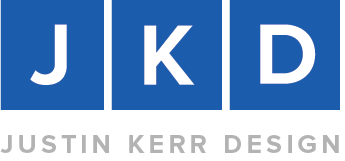The Most Important Part of Your Website
Build-it-yourself web platforms like Squarespace and Wix promise that you can build a beautiful and dynamic website in a single afternoon; which is only half the truth. While an elegant template with pre-defined typography, colors, and other design elements is a good start, you still have to generate the most important part of your new website.
Content is the heart of any website because it’s what attracts, informs, and engages potential customers. I’ve talked with many solopreneurs who excitedly began building their own site, finished the About Me page, and then sat back and thought, “now what?”
A content outline
You probably remember learning how to write an essay in grade school. Your teacher instructed you to select a topic, create an outline, and then sent you off to do some research in the library (what we called the internet back in the day). In some ways the process for crafting your website’s content is not all that different from your 6th grade essay on Issac Newton.
A typical marketing website has the following elements (also known as a site map):
Home
About Us
Our Team
Services / Products
Our Thinking (Blog)
Contact Us
The exact order or number of elements for your site map will vary but these are the basics. Your next task is to fill these pages with relevant, compelling content that will tell prospective customers who you are, what you do, and why they should buy your product or service.
Your positioning statement
Some page types, like Contact Us, are simple and fairly straightforward but the structure of others, like the home page, is more complex and critical to the mission of your website. You have 5-7 seconds, once a visitor arrives on your home page, to convince them to stay.
A short, direct statement that addresses a visitor’s potential pain point is a good way to get their attention and compel them to dive deeper. Something like, “15 minutes could save you 15% or more on your car insurance,” is short, memorable, and aimed squarely at the pain point of a typically expensive and tedious experience. This short sentence is your positioning statement, or Unique Value Proposition and it tells your audience why they should purchase your product or service.
Some content dos and don’ts
Do keep your content short and to the point.
Do break up your content into digestible chunks and use descriptive headlines for easy page scanning.
Do keep in mind that your customer is hero of your marketing story and the content should be speaking to them and addressing their needs and pain points.
Don’t use clichéd or bad quality stock photos. For details, see this post.
Don’t use technical or corporate jargon in your marketing content. Use human language and connect emotionally with your audience.
Need some help to get started?
If you’re feeling a little overwhelmed at this point or aren’t sure how to start, consider booking a design & marketing consultation. After one session I promise you’ll leave with a clear action plan for your website content and the confidence to carry it out.

